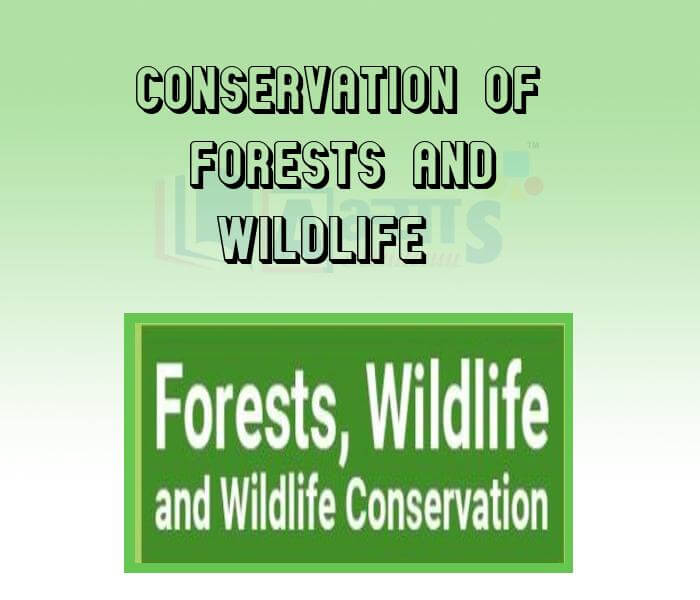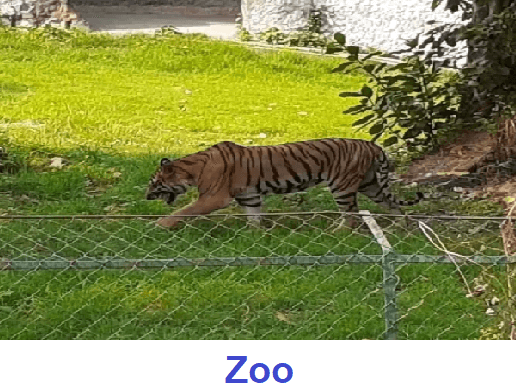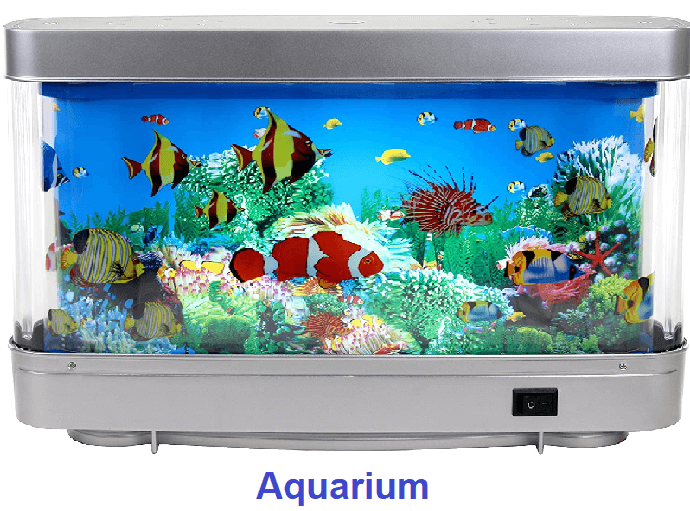Conservation of Forests and Wildlife


Conservation of Forests and Wildlife
The protection, preservation, management or restoration of wildlife and of natural resources, such as forests, soil and water is known as conservation. The variety of life on earth is commonly referred to as biodiversity. It plays an important role in the function food chains and food webs. In fact, it helps to maintain the ecological balance of ecosystem.
Biodiversity : Number and variety of life forms includes plants, animals and microorganism that exists is known as biodiversity.
Conservation of Wildlife: By preventing deforestation, planting new forest(afforestation) and creating wildlife sanctuary we can protect natural habitat and provide food and shelter.
Wildlife includes those animals that have not been domesticated or tamed and are usually living in a natural environment including both game and non - game species. Deserts, forests, rain, forest, urban sites , plains, grasslands and other areas including the most developed all have distinct forms of wildlife.
Factors responsible for extinction of wild life :
Strategies for wildlife conservation : Wildlife protection act was passed in 1972 and amended 1981. Forest protection act was passed in 1980 while environment protection act was passed in 1986. Under the wildlife protection act a large number of sanctuaries, national parks and biosphere reserves were established in different parts of the country.
Important steps for wildlife conservation are :
Conservation are categorised into in-situ and ex-situ conservation.
| Ex - situ conservation | In - situ conservation |
| It means the conservation of biological diversity outside their natural area. | It means the conservation of biological diversity in their natural habitat it self. |
| Artificial conditions are created to make their habitat almost like their natural habitat. | Protected areas are the sancturies and the national parks |
| It involves the maintainence of genetic variation(Genetic conservation) away from its original location. | It aims to enable biodiversity to maintain itself within the context of ecosystem. |
| Established botanical and zoological gardens, conservation strands, banks of germplasm, pollen, seed, seedling, tissue culture, gene, DNA etc. | Establish a protected area network with appropriate management practices. |
| It identifies and rehabilitates threatened species. | It involves the reduction of biotic pressure rehabilitation. |
| Example : Zoo, Aquarium, seed banks, botanical gardens etc. | Example : National parks, biosphere reserves, parks and sancturies. |
 |
 |
 |
The species, which are in danger of extinction, are referred to as _________________ | |||
| Right Option : A | |||
| View Explanation | |||
Geographical space which is managed by government to conserve nature, culture and preserve ecosystem are called __________ . | |||
| Right Option : A | |||
| View Explanation | |||
In some countries, the buying and selling of animals such as orangutans and leatherback turtles have been banned. These animals need to be protected so that ___________ . | |||
| Right Option : B | |||
| View Explanation | |||
Students / Parents Reviews [10]
It was good as the experience because as we had come here we had been improved in a such envirnment created here.Extra is taught which is beneficial for future.

Eshan Arora
8thMy experience was very good with Abhyas academy. I am studying here from 6th class and I am satisfied by its results in my life. I improved a lot here ahead of school syllabus.

Ayan Ghosh
8thMy experience with Abhyas is very good. I have learnt many things here like vedic maths and reasoning also. Teachers here first take our doubts and then there are assignments to verify our weak points.

Shivam Rana
7thAbhyas Methodology is very good. It is based on according to student and each child manages accordingly to its properly. Methodology has improved the abilities of students to shine them in future.

Manish Kumar
10thIt has a great methodology. Students here can get analysis to their test quickly.We can learn easily through PPTs and the testing methods are good. We know that where we have to practice

Barkha Arora
10thAbhyas is a complete education Institute. Here extreme care is taken by teacher with the help of regular exam. Extra classes also conducted by the institute, if the student is weak.

Om Umang
10thI have spent a wonderful time in Abhyas academy. It has made my reasoning more apt, English more stronger and Maths an interesting subject for me. It has given me a habbit of self studying

Yatharthi Sharma
10thMy experience with Abhyas academy is very good. I did not think that my every subject coming here will be so strong. The main thing is that the online tests had made me learn here more things.

Hiya Gupta
8thOne of the best institutes to develope a child interest in studies.Provides SST and English knowledge also unlike other institutes. Teachers are co operative and friendly online tests andPPT develope practical knowledge also.

Aman Kumar Shrivastava
10thAbout Abhyas metholodology the teachers are very nice and hardworking toward students.The Centre Head Mrs Anu Sethi is also a brilliant teacher.Abhyas has taught me how to overcome problems and has always taken my doubts and suppoeted me.
